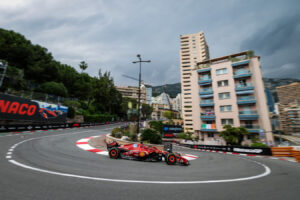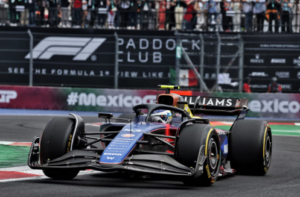The Shanghai International Circuit will host the second round of the 2017 Formula 1 season this weekend. This will be the 14th running of the Chinese Grand Prix at the Hermann Tilke-designed track. The circuit, built on marshlands, is characterized by enormous paddocks perched on top of a lake and a track that always produces interesting races. It is a venue that matches the size of the host country, with the stands having a seating capacity of 200,000 spectators.
Chinese Grand Prix Preview
The History
The Shanghai International Circuit was first added to the F1 calendar in 2004. The inaugural race was won by Rubens Barrichello for Ferrari. After a slow start, the Grand Prix has taken root in China over the last decade. Similar to the passionate fan following that the Japanese fans bring to the race in Suzuka, the Chinese fans also bring a distinct flavor to this race. The teams initially complained about the pollution levels in China and the restrictions on internet access to the outside world. But, they are now comfortable going to this race in the “Land of the Dragons”.
The Drivers and Teams
Ferrari and Mercedes are the most successful teams at this GP with four wins each, followed by McLaren with three wins. The first seven races produced seven different winners. Fernando Alonso (2005 and 2013), Kimi Raikkonen (2007), Lewis Hamilton (2008, 2011, 2014, 2015) and Sebastian Vettel (2009) are the drivers on the current grid who have won the Chinese GP. In 2007, then leader of the drivers’ championship Hamilton driving for McLaren had a dramatic retirement from the race. As he entered the pit lane on worn tyres, he skidded off and got beached in the gravel. This paved the way for Raikkonen to win the race and he went on to clinch the drivers’ title in the last race in Brazil by one point. Mercedes has dominated this race with four wins in the last five years.
The Circuit
The 5.451 km Shanghai International Circuit located in Jiading province was developed from bleak, reclaimed marshlands. The track is underpinned and artificially elevated by 40,000 pillars which are 40-80 meters high. Some of these pillars had to be repaired in 2011, as parts of Turn 1, 8 and 14 started sinking. The imposing size and structure of the paddock and the grandstands has been matched equally by a well-designed and technically challenging track. The track is designed in the shape of the Chinese letter “shang”, the first letter of the host city Shanghai.
Sectors, Corners, and DRS Zones
The track features a series of sixteen slow and medium corners with two very long straights. The circuit demands a medium to high downforce setup. The cars are on full throttle 55% of the time and the fuel consumption is medium. The brake wear is medium with the engines under less stress in the cooler conditions in China.
Sector 1 from Turn 1 to Turn 5 offers good overtaking opportunities and will see the drivers jostling for positions at the start of the race. There are a set of two ‘snail’ sections – Turns 1-2-3 and Turns 11-12-13 (Sector 3) which are a set of tight corners that curl back on each other.
Sector 2 from Turn 6 to Turn 10 features a pair of high-speed corners in Turns 7 and 8 and a pair of low-speed corners in Turns 9 and 10.
Sector 3 from Turn 11 to Turn 16 has the tight snail section and also features the two very long straights. The 1.175 kilometer back straight is the longest straight of the current Formula 1 circuits and ends into a heavy braking right hairpin on Turn 14.
The previous races have been won by starters on the first three rows of the grid, with Michael Schumacher’s win from sixth in 2006 being the lowest start position. There are two DRS zones for the race before Turns 1 and 14. The second DRS Zone is the longest DRS zone and the most likely overtaking point because the cars slow down for the hairpin.
Tyre Strategies
Pirelli tyre choices are the red-striped supersoft tyres, yellow-striped soft tyres and white-striped medium tyres. The race is likely to be a two stop race in dry conditions. But with a 90% chance of rain for the race on Sunday, the new intermediate and wet tyres could be run for the first time. Ferrari is the only team that did meaningful testing before the season on these new wet weather tyres and this could be an advantage for the Italian team in variable weather conditions. There is a high chance of the Safety Car at this race. The new FIA rules for standing starts in wet-weather conditions might get its first run here.
Current Form
Sebastian Vettel and Ferrari pulled off a surprise win in the season-opener in Melbourne, Australia. The Ferrari form confirmed that the Maranello-based team has a fast car that can match the Silver Arrows this season. Lewis Hamilton who started from pole and had the lead when he made his first pit stop was matched by Vettel in race pace. When Hamilton got stuck behind Max Verstappen after the pit stop, it gave Vettel a free run and helped him build a healthy gap to his Mercedes rival. In the end, Hamilton and Mercedes had to settle for second place, a very surprising result since the hybrid engine era started in 2014. Valtteri Bottas joined the two world champions on the podium and made a good start to his Mercedes stint. The Ferrari and Mercedes cars are evenly matched and far ahead of Red Bull Racing and Williams behind them.
The long straights on this circuit should help the Mercedes-powered teams like Williams and Force India to make an impact. Hamilton has clinched his sixth straight pole at this race. With a chance of rain on Sunday, the battle between Hamilton and Vettel starting on the first row will be gripping. The Australian Grand Prix has setup what looks like a very exciting season, with the top two drivers of their generation finally battling it out for the championship.
Main Photo






